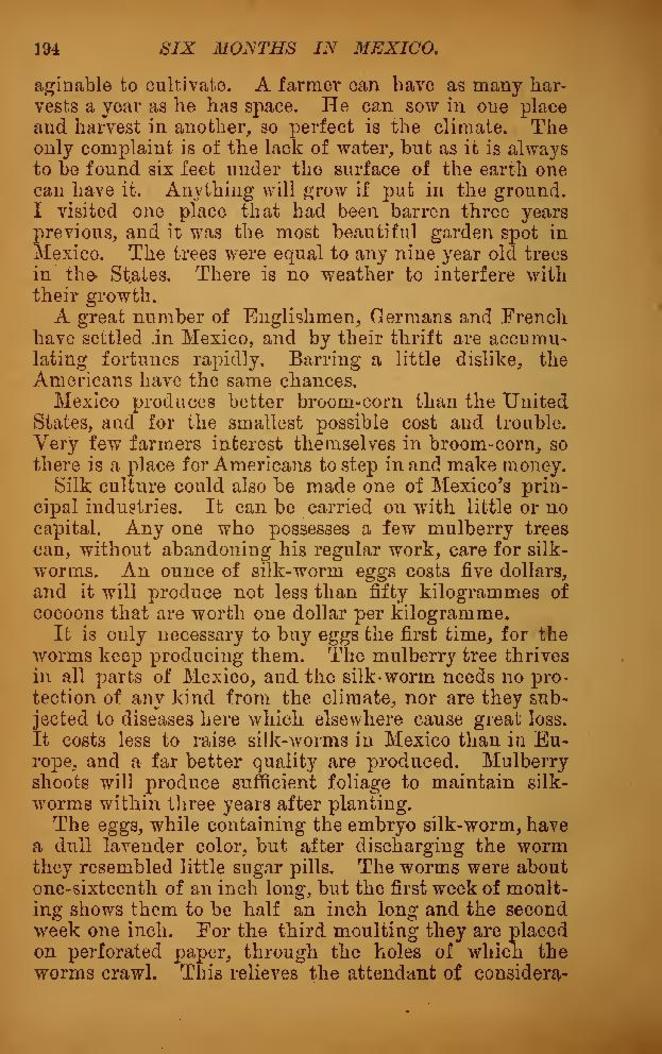aginable to cultivate. A farmer can have as many harvests a year as he has space. He can sow in one place and harvest in another, so perfect is the climate. The only complaint is of the lack of water, but as it is always to be found six feet under the surface of the earth one can have it. Anything will grow if put in the ground. I visited one place that had been barren three years previous, and it was the most beautiful garden spot in Mexico. The trees were equal to any nine year old trees in the States. There is no weather to interfere with their growth.
A great number of Englishmen, Germans and French have settled, in Mexico, and by their thrift are accumulating fortunes rapidly. Barring a little dislike, the Americans have the same chances.
Mexico produces better broom-corn than the United States, and for the smallest possible cost and trouble. Very few farmers interest themselves in broom-corn, so there is a place for Americans to step in and make money.
Silk culture could also be made one of Mexico's principal industries. It can be carried on with little or no capital. Any one who possesses a few mulberry trees can, without abandoning his regular work, care for silkworms. An ounce of silk-worm eggs costs five dollars, and it will produce not less than fifty kilogrammes of cocoons that are worth one dollar per kilogramme.
It is only necessary to buy eggs the first time, for the worms keep producing them. The mulberry tree thrives in all parts of Mexico, and the silk-worm needs no protection of any kind from the climate, nor are they subjected to diseases here which elsewhere cause great loss. It costs less to raise silk-worms in Mexico than in Europe, and a far better quality are produced. Mulberry shoots will produce sufficient foliage to maintain silk-worms within three years after planting.
The eggs, while containing the embryo silk-worm, have a dull lavender color, but after discharging the worm they resembled little sugar pills. The worms were about one-sixteenth of an inch long, but the first week of moulting shows them to be half an inch long and the second week one inch. For the third moulting they are placed on perforated paper, through the holes of which the worms crawl. This relieves the attendant of considera-
